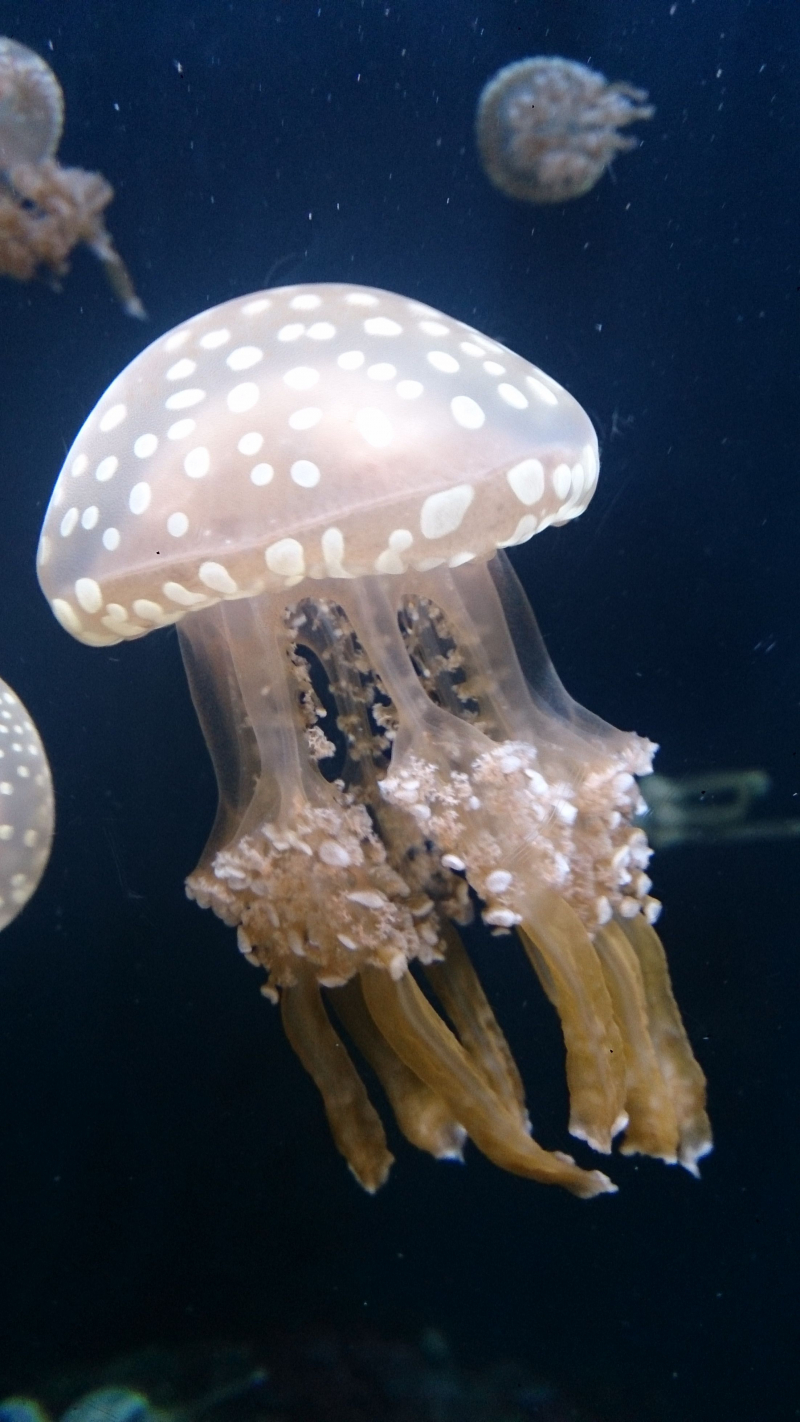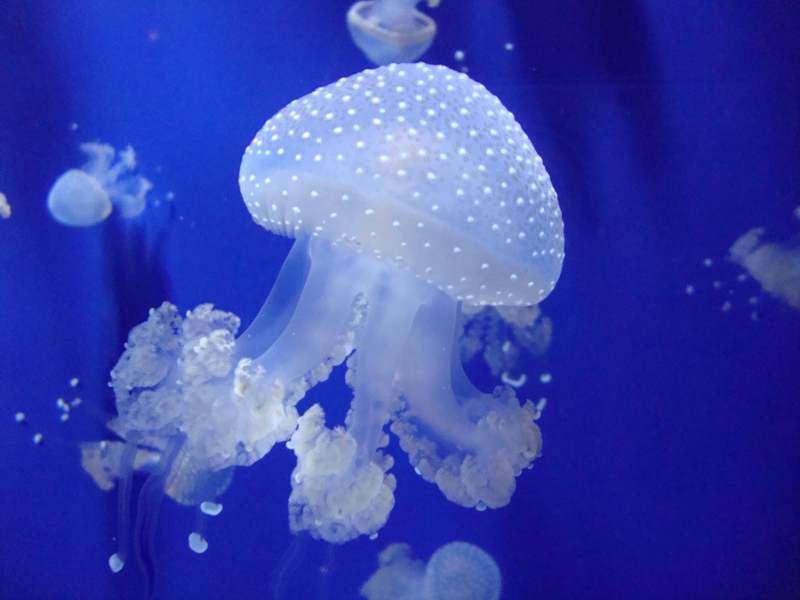White Spotted Jellyfish
The White-Spotted Jellyfish (Phyllorhiza punctata) is a species of jellyfish, also known as the floating bell, Australian spotted jellyfish, or brown jellyfish. Although it has been widely introduced elsewhere, its original range is the western Pacific from Australia to Japan. It mostly consumes zooplankton for food. P. punctata bells typically measure up to 50 centimeters (20 inches) in diameter, however, one that was 72 cm (28 inches) broad and possibly the largest ever discovered was discovered on Sunset Beach in North Carolina in October 2007.
A medusa stage (adult) and a polyp stage make up the two stages of the life cycle of true jellyfish (juvenile). The female jellyfish gathers the sperm into her mouth, where she holds the eggs, during the medusa stage when male jellyfish release sperm into the water column. Larvae are generated during fertilization, after which they depart from their mother and land on the ocean floor. Once at the bottom, a polyp shape appears, which then divides into further polyps to reproduce asexually. They are not thought to pose a hazard to people and only have weak venom. They have a barely perceptible sting that can be treated with weak acid.












